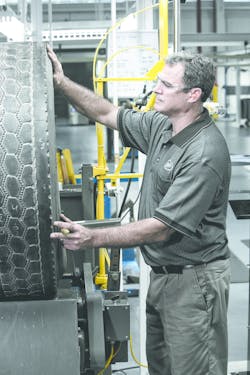Most fleet maintenance professionals are aware of the many benefits of retreading tires. Retreading encourages fleets to better manage their tire assets and can help deliver a lower total cost of ownership over time.
In general, fleets that use retreaded tires do a better job of protecting and caring for tire casings to ensure they can be retreaded.
Greater attention to proper tire care practices helps to improve wear-out performance and fuel economy for a fleet, and can also help reduce costly road calls. Retreads typically cost less than what a new tire costs and are a standard practice in the majority of today’s largest and most profitable fleets. More than ever, having a quality retread program is a safe, responsible and smart choice for today’s fleets.
Six-Year Span
With the latest generation of quality casings, fleets are now able to retread their tires multiple times over a span of six years.
The key to a retread program is understanding the long-term value of a good casing. Retiring casings too early can take away from the bottom line.
Today’s quality new tires are manufactured to be retreaded, and most tire manufacturers provide a warranty on their casings for multiple retreads – ranging, for example, from two retreads on a Bridgestone Dayton commercial truck tire to unlimited retreads on a Bridgestone Ecopia truck tire.
Unlike older casings that were prone to a variety of problems, premium casing construction technologies have improved to a point where casings can endure significant wear and yet still be retreaded several times. Automatically retiring a casing after a pre-defined number of retreads or years can, therefore, leave considerable money on the table, as perfectly good casings are sent to the landfill.
Specs
To realize the full savings that a modern casing can provide to a fleet, it is important to set the right retread specification. Today, many fleets continue to set rigid specifications, either based on casing age, the number of times the casing has been retreaded or the number of repairs that have gone into the casing.
While these rigid specifications may have made sense in the past, technologies such as shearography help the retreader determine if a casing should be retreaded, independent of age, number of retreads or repairs. Shearography uses a combination of scientific tools – including lasers, holography, polarized light, an imaging technique called interferometry, computer image processing and optical math – to probe deep inside a tire.
This technology provides important information without injuring the tire in any way.
For some fleets, the first step is to experiment with small changes to specifications, such as adding a year to the casing age specification. If this generates savings without negatively impacting performance, fleets can continue to experiment with other changes to their specs until they determine what works best for them.
As a starting point, we recommend that fleet managers speak with a retread professional to develop the right solution.
Not Equal
Regardless of fleet size, maximizing the life of casings is the result of a high standard, comprehensive tire program that includes quality retread manufacturing practices and performance tracking.
As many fleets have learned, not all retread brands abide by the same rigorous standards for equipment, shop maintenance and employee training. The difference between retreading processes can dramatically impact the quality of the retread and the maximum lifetime that a casing can be retreaded.
Retreads today are a safer and smarter solution than ever before. Making the most of tire assets by combining quality casings and quality retreads is a fast and effective way for fleets to grow their bottom line.
Whether large or small, fleets that are committed to driving savings should take time to explore a retread program if they haven’t yet done so. Do the research, talk to a retread dealer and learn how a retreading program can benefit your business.
Gary Nye is director of operations, Bandag, Bridgestone Americas Tire Operations (BATO), a business unit of Bridgestone Americas, whose parent company, Bridgestone Corporation, is the world's largest tire and rubber company. The BATO (www.bridgestoneamericas.com) business unit includes the U.S. and Canadian consumer and commercial tire businesses and Bridgestone Retail Operations, which operates a network of company-owned automotive service providers around the world.
BATO develops, manufactures and markets Bridgestone, Firestone, Bandag and associate brand tires. It is focused on retail, wholesale and original equipment markets, supplying tires to its customers in the Americas.
